
16 minute read
Phelps Lake: Fly Fishing for Trophy Pike in Canada
Phelps Lake:
Fly Fishing for Trophy Pike in the Canadian Wilderness
Why travel all the way Canada, to the opposite side of the globe, to fly fish for pike? After all, you can do that in any random lake, pond or river at home. The answer is actually quite simple: The Canadian wilderness is a place where you can still experience untouched pike fishing; a unique and compelling escape for those who dream of catching a veritable trophy pike.
By: RASMUS OVESEN, Photos by: RASMUS OVESEN and ANDERS OVESEN
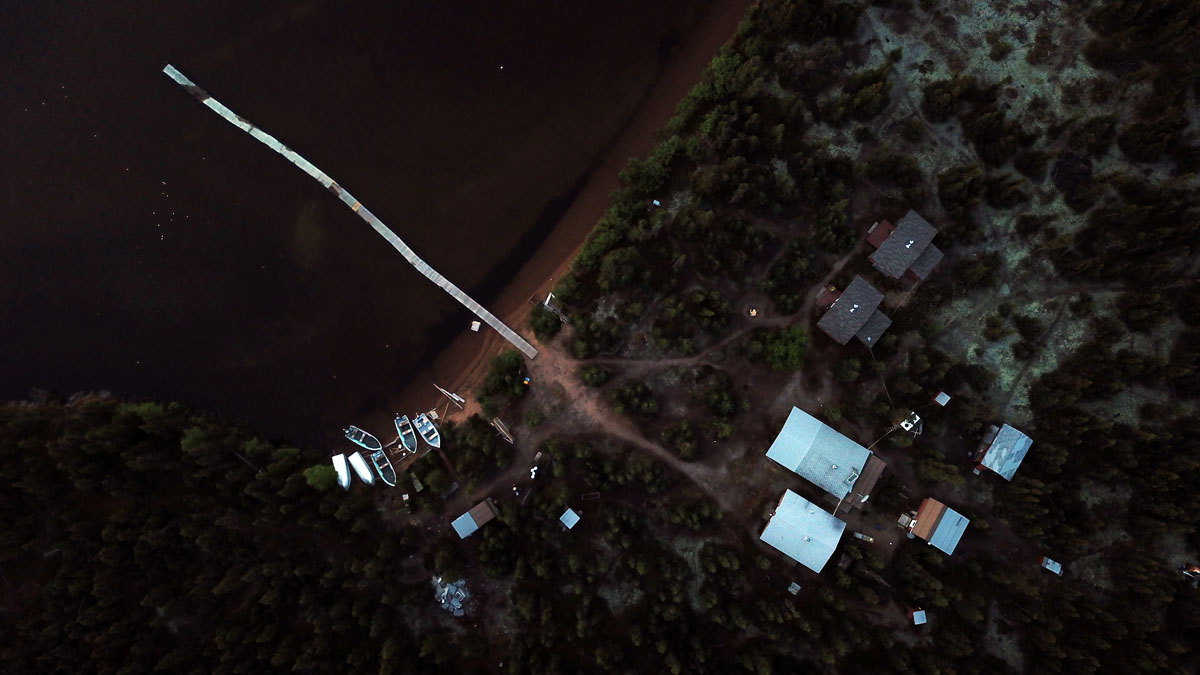
IF THERE IS A CARBON-DIOXIDE HELL that’s probably where I’ll be going after this trip. I have already covered three flights in order to get to the city of Saskatoon in the Canadian province of Saskatchewan, and - early tomorrow morning - another three flights await before I’m ready for the final leg of the journey: A flight that departs from the barren outpost, Stony Rapids, in the north-western corner of Saskatchewan, and one that involves an old DeHavilland Turbo Otter hydroplane; a Canadian manufactured plane that had its heyday in the post-World War II-era.

After two days of arduous travelling, the propeller-driven air freighter will touch down on Phelps Lake’s vast water surface and moor at Wolf Bay Lodge in the middle of the Canadian wilderness. Luckily, as time will tell, what awaits me is nothing short of an untouched fishing paradise and a trophy pike fishery that is well worth the eternal flames of the abyss below.
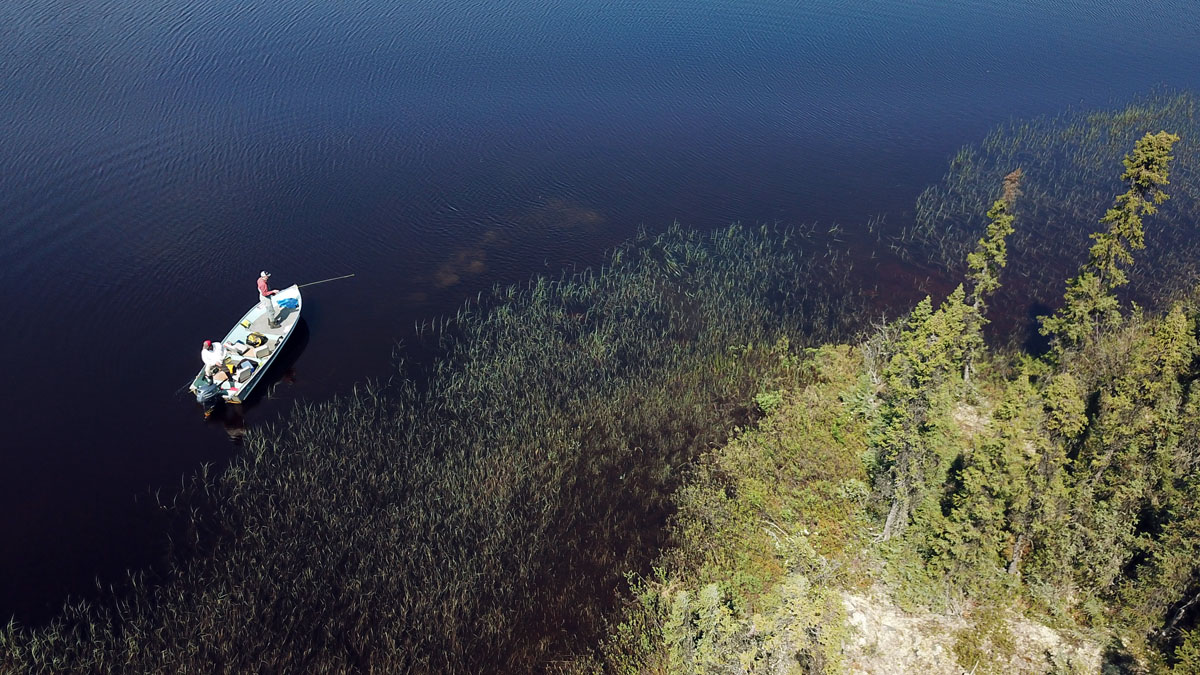
ON OUR WAY, from the dead airspace above Saskatchewan, I can see how we’re slowly transcending the familiar realm of civilization and disappearing into what appears to be a massive void, way beyond. Symmetrical and lush-green pastures neatly outlined by fences, field boundaries and bordering gravel roads are gradually relieved by vast woodlands, the monotony of which is only broken sporadically by the flickering waters of ancient, glacial lakes and quietly meandering rivers.
For a while, there are still sporadic gravel roads, timber industry, wooden cabins, and the odd uranium mine to be seen below us, but as we continue onwards all traces of mankind slowly ebb away. It is as if the flat landscape down there gradually absorbs and transforms everything around it, ultimately leaving nothing but an infinite monotony of anorectic pine trees, chaparral and water that takes on a wealth of rebellious and imaginative shapes. Once on the hydroplane with a course set for Phelps Lake, the landscape unfurling below is like an obstinate human vacuum: Interminably empty and without all the cynically calculating traces that otherwise reveal themselves wherever humans have settled or frequently pass through. There is nothing but wilderness as far as the eye can see.
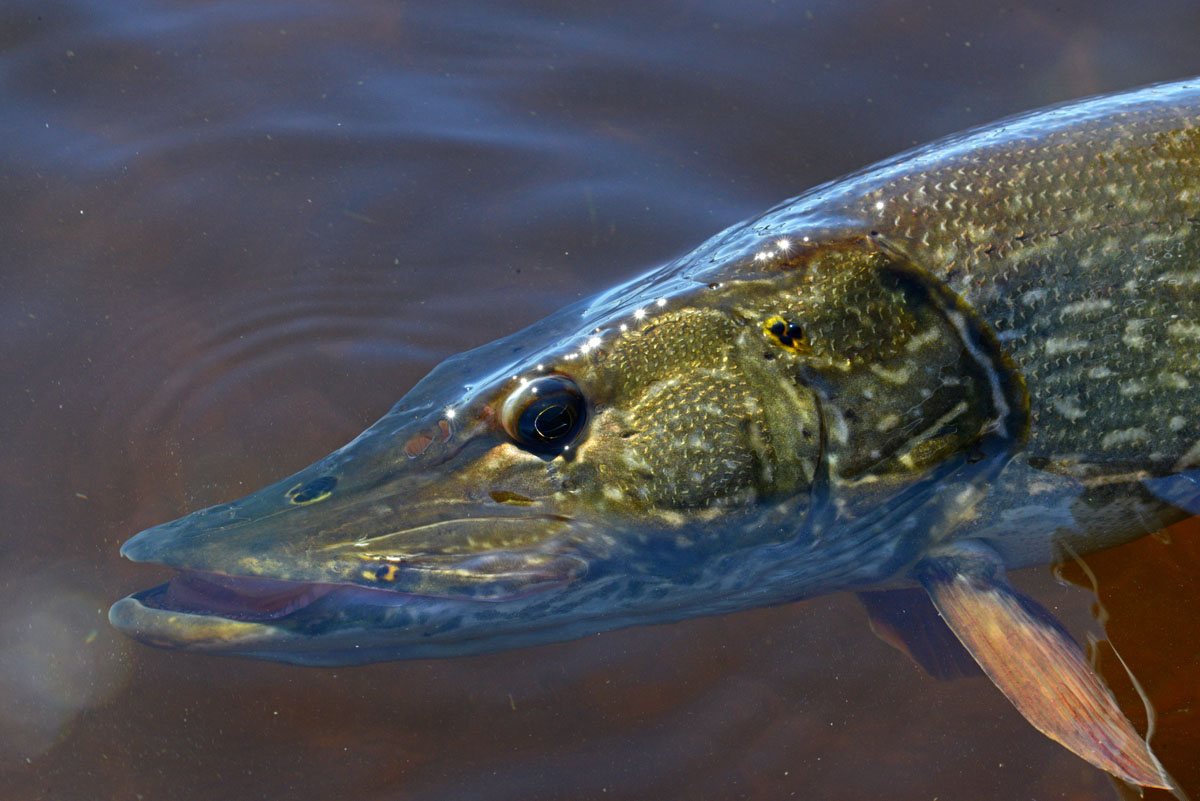
2 HOURS LATER, Phelps Lake manifests itself below us: Silently resting deep in the terrain, with all its chaotic branches, shallow bays and jagged islands in stark contrast to the stoicism of its water surface. It’s an early summer day in the middle of June. Warm light floods the vast expanse underneath the saturated blue skies. A comprehensive high-pressure system has killed all winds, and when we finally land, it’s like touching down on a big mirror. After having said hello to Wolf Bay Lodge-owner, Brent Osika, who greets us at the landing bridge, things unfold quickly. My brother, Anders, and I have half a day’s worth of fishing ahead of us, and soon we find ourselves in a Linder skiff with Merasty B Jason; one of the experienced local guides.
The skiff cuts across the flat water with surgical precision. It navigates at a high speed through narrow passages, wide-open expanses and big bays. And being surrounded by nothing but forest, I soon lose all sense of orientation and locality. It’s an intoxicating feeling and it is further amplified when – after a 20-minute boat ride - we arrive at a big, shallow bay, the engine is cut off and a deafening silence descends upon us.

THE PIKE ARE STILL IN THE SHALLOWS. The spawning – and a long, ice-cold winter – is but a dimming memory, and the fish are hungry. Now, as Jason explains, it’s simply a matter of finding the fish. They tend to school up in the many bays; the shallow ones with dark, muddy bottoms where the water gets warmed effectively up by the sun and baitfish are fairly abundant. We still have no idea, however, that we’ll be sight-fishing for them in less than half a meter of water – and, on several occasions, in- and along flooded meadows.
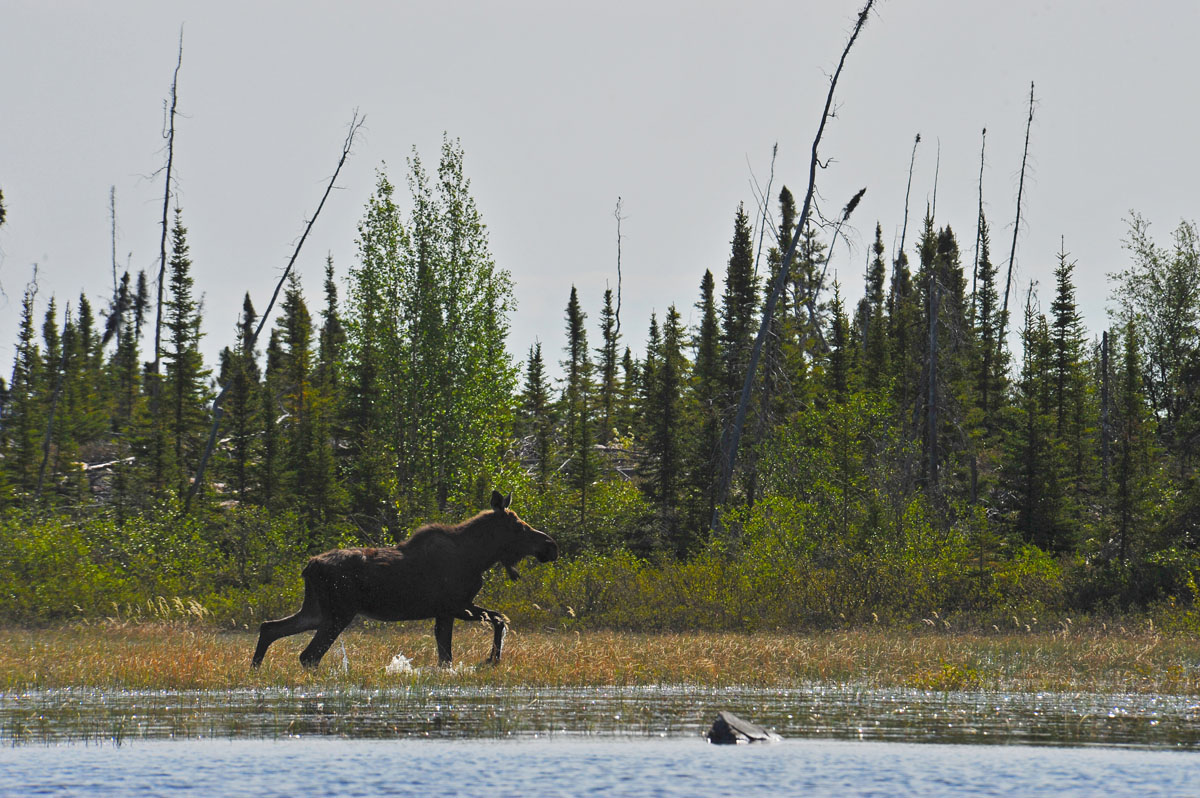
It doesn’t take long before we find the first few fish. They are hovering above the bottom along shorelines or in places where cabbage beds have slowly started to seep from the silty lake floor. They’re not downright easy to see – not even though the water is surprisingly clear, but it’s obvious that these fish are all small males. We’re soon busy warming up. And it doesn’t take long before the first few pike have shut their spike mat-like jaws around our flies. Despite the fact that they’re looking rather apathetic, as they stand there semi-petrified along the bottom, they - sure enough - are hungry and aggressive. They promptly react at the sight of our rabbit Zonkers, hunt them down with gluttonous ferocity and, oftentimes, inhale them right along the boat-side in big, splashy explosions of water.
It’s been a while since my brother and I have fished for pike, but we’re quickly reminded why we both love to target this lightning-quick and sinister predatory fish.
We haven’t travelled this far, however, to fish for small pike and the guide is quite well aware of it. So, having rekindled our reflexes, shortly, on a handful of smaller pike, we therefore move on to another one of the lake’s countless bays.

HAVING RECONNOITRED an additional three bays, we finally make it to a small outpouching in the northern corner of the lake. The bay inside, which is backlit by the drowsy beams of the evening-sun, doesn’t look like much at first. The entrance is so shallow that we need to use oars to get in, and at first glance across the dark, ochre-coloured water, there are no signs of pike. It isn’t until we reach the far corner of the bay that I see the shadow of a big pike underneath two bowed moss-clad pine trees, inside a patch of flooded meadow grass.
The fish isn’t alone! Several skittish male pike, which by comparison look distinctly immature and juvenile, stick to the big female – with their lives as a potential stake. With lightly-trembling fins and a tense, aggressive look on her face, she seems likely, at any given moment, to suddenly lunge a malicious attack on one of her suiters.

That impression is further enhanced, shortly after, when I cast and place my light-grey rabbit-strip Zonker on the edge of the flooded grass. As the fly hits the water, the big pike is instantly on it – with several smaller pike dragging vigilantly behind.
I provide the fly with a little bit of action, making it wind and twist pulsatingly below the surface. The pike instantly shoots forward, ploughing purposefully through the water, and all of a sudden the fly has disappeared into the massive cavity inside the fish’ jagged jaws.
I set the hook instinctively – so promptly that the cork handle squeaks, and I now feel the weight of the fish as it thrashes about whirling up the muddy bottom and sending cascades of water meter-high into the air.
A hectic fight, with several explosive runs, ensues. The fish, however, is solidly hooked and eventually the fish yields to the persistent pressure from the fly rod’s powerful carbon fibres, and it capsizes close to the boat. It’s bigger than first anticipated, and it is with much effort and strain that I manage to lift it aboard the skiff.

A QUICK MEASUREMENT reveals a length of 125 well-proportioned centimetres. My dream of catching a big wilderness pike has come true –and in a spectacularly visual way. We shoot a quick series of pictures in the shallow water along the bank, and as the fish thrusts itself free of my hand and powerfully swims away from the scene of the crime, I draw a sigh of relief. Mission accomplished!
There’s no time to rest on the laurels, however. A faint, whispering, ”Psst” sounds from the casting platform where the guide is perched and pointing towards the water. And as we join him, we quickly spot another big pike – and another one, and another one...
LESS THAN TWO HOURS LATER we have caught an additional seven full-grown pike with three of them well in excess of 120 centimetres; all of them sight-fished with thunderously brutal takes as a result in the shallow water along the shoreline.

Furthermore, we have cast at a couple of fish in the vicinity of 135cm – fish, that for whatever reason, just didn’t respond to our flies.
As we wrap up and head back to the lodge, we’re in a state of chock. Never before have we experienced such hectic pike fishing with so many big fish. But as we’re about to find out, during the next five days, this is nothing out of the ordinary on Phelps Lake.
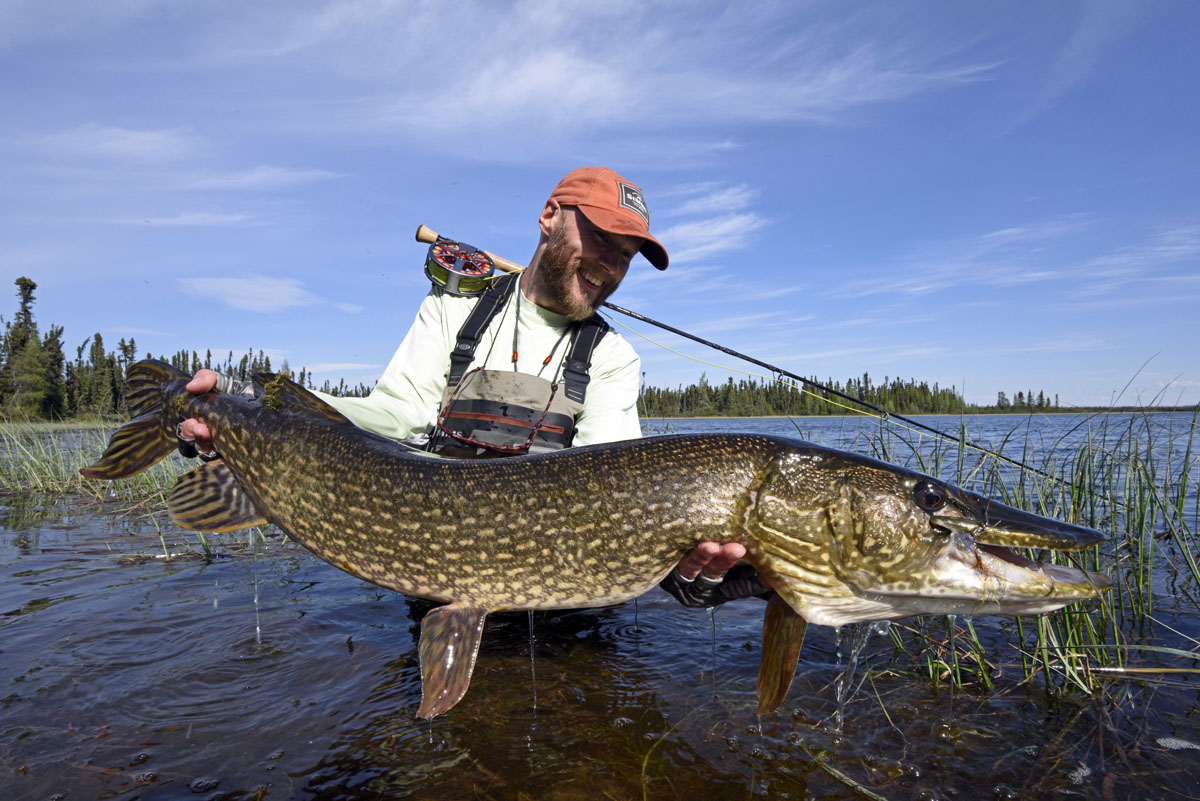
During our stay here, we sight-fish another 200 pike with 40 of them well over one meter and several additional fish in the 110 - 120-centimeter span. Furthermore, we get to experience some cool dry fly- and nymph fishing for trophy lake whitefish and, not least, some sweat-dripping streamer fishing for the feisty lake char that school up along Phelps Lake’s drop offs. But that’s a completely different story of course...
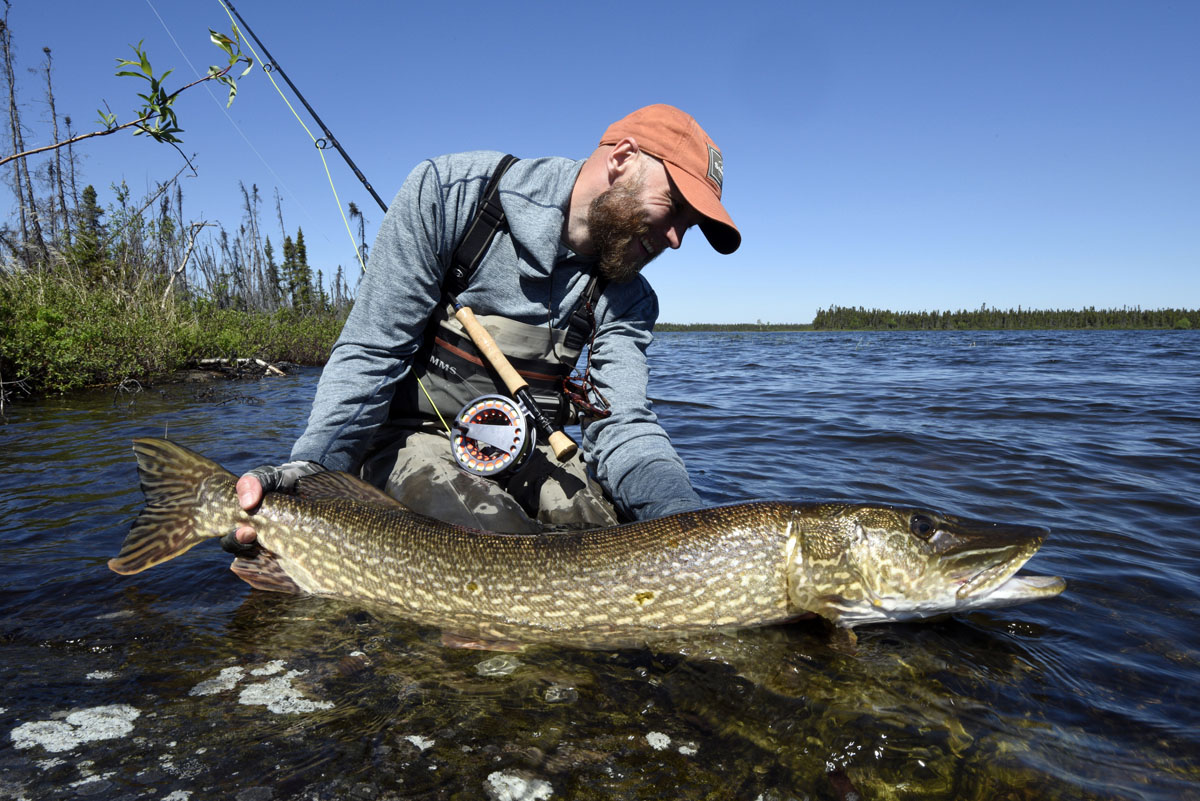
The impression I take with me from the lake is decidedly unambiguous. It may be madness to travel way beyond the outskirts of civilization -
to the middle of the vast Canadian wilderness, in search for pike. But it’s most certainly an experience, I would never have been without –and one that I’d readily recommend anyone, who has a propensity towards big toothy predators in untouched surroundings.


Fact File - Phelps Lake
Phelps Lake is a massive lake in the north-eastern corner of the Canadian province, Saskatchewan. It’s a glacial lake with a surface area of about 130 km2, and with the exception of a few areas with up to 30 meters of depth, it is an incredibly shallow lake – something that makes it an ideal habitat for pike.
With more than 300 islands, countless reefs, backwaters, bays and tributaries with clear water, you couldn’t possibly charter all the good fishing spots in a full week. And since there are an additional 60 km2 of prime fishing waters to be reached on foot or via channels and tributaries, you could argue that Phelps Lake represents a whole fishing area, rather than just a single body of water.
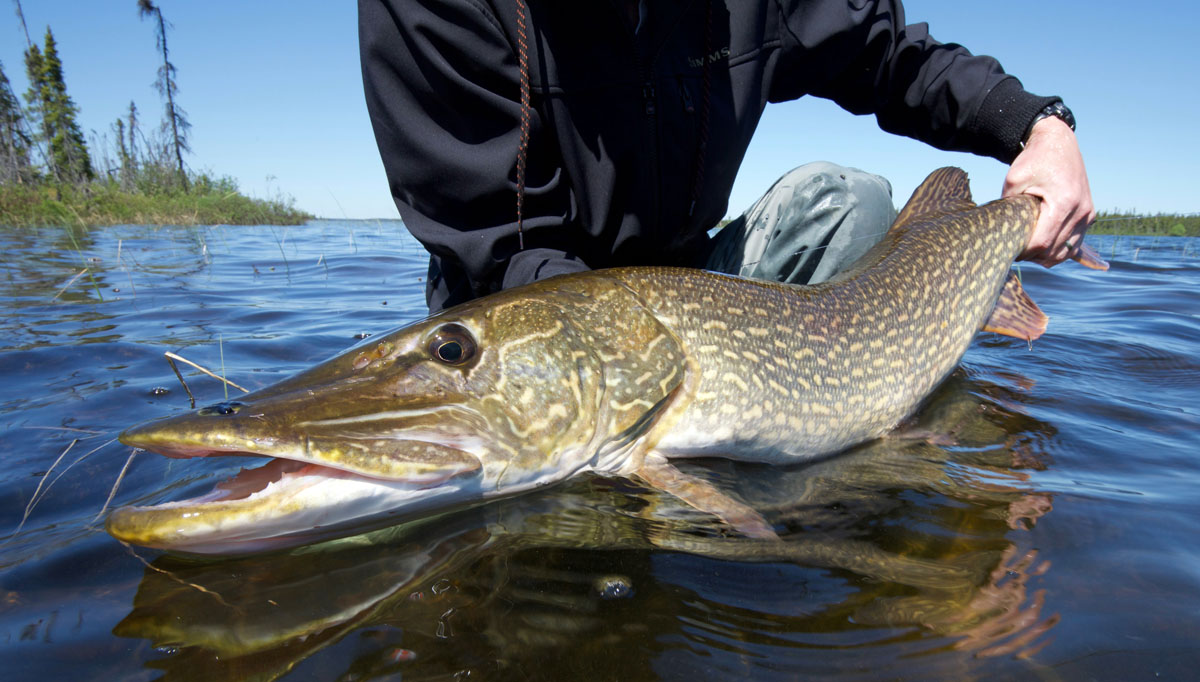
The season stretches from the middle of June, from ice out, until the end of August, at which point winter is already looming. At the beginning of the season you can experience some incredibly exciting sight-fishing for pike. At this time of year, these fish will have just finished spawning in the myriad of shallow bays and flooded meadows around the lake, and they will be both hungry and aggressive. During the summer months and onwards till the end of the season, the fishing is typically translocated to the many drop offs, reefs and islands, where Lily pad- and cabbage beds rise from the bottom.

Catches in excess of 50 1 meter+ pike per boat per week are not uncommon, and every year several specimens larger than 130 centimetres are caught. The lodge record is closer to 150 centimetres.

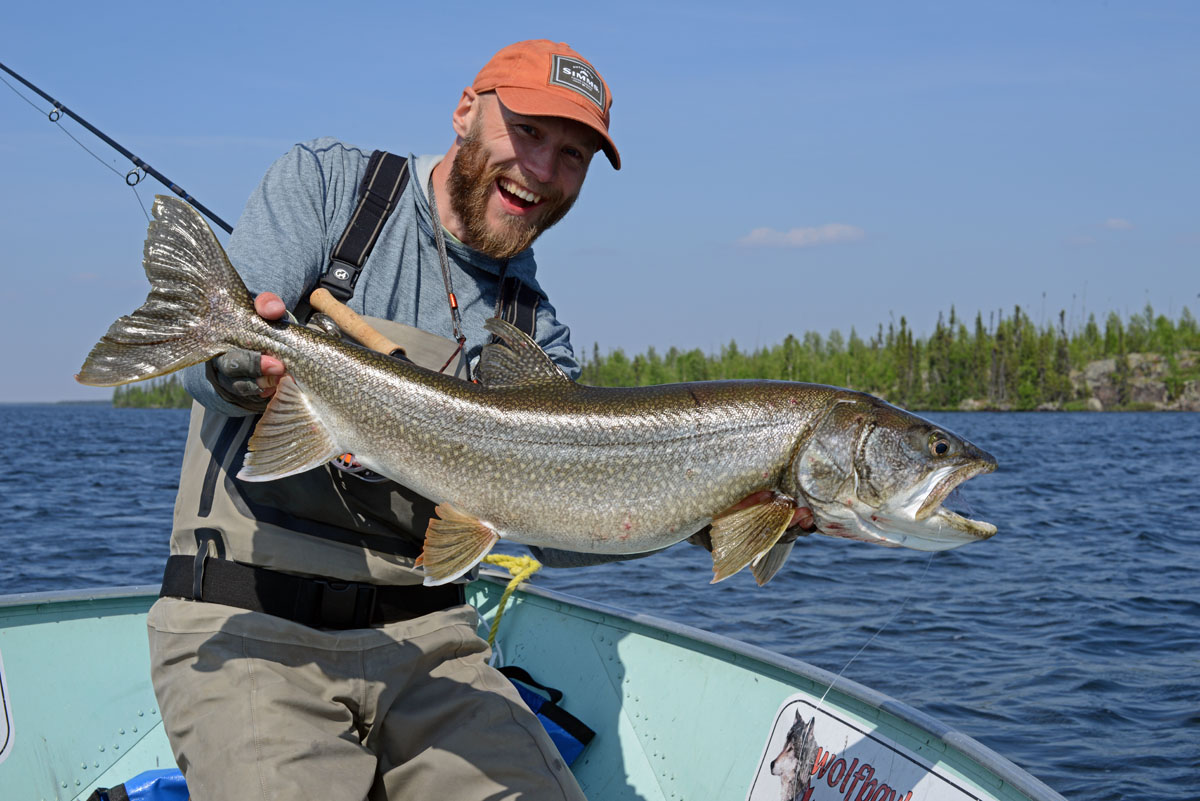
In addition to the spectacular pike fishing, it is also possible to catch trophy white fish and giant lake char (Salvelinus namaykush) on Phelps Lake. The latter can be found in tremendous numbers, especially at the south-end of the lake, where the depth drops to about 30 meters. At the beginning of the season, fast-sinking lines and weighted streamers are used to connect with them, but as summer progresses and the water heats up, they rise towards the surface. Here, they can be fished with floating and intermediate lines, and although the average size is relatively modest – around 2-3 kilos – it’s by far uncommon to catch fish in the vicinity of 10 kilos. Although these fish are minimally targeted, specimens in excess of 20 kilos are caught every year – and 30 kilos+ fish are certainly around.
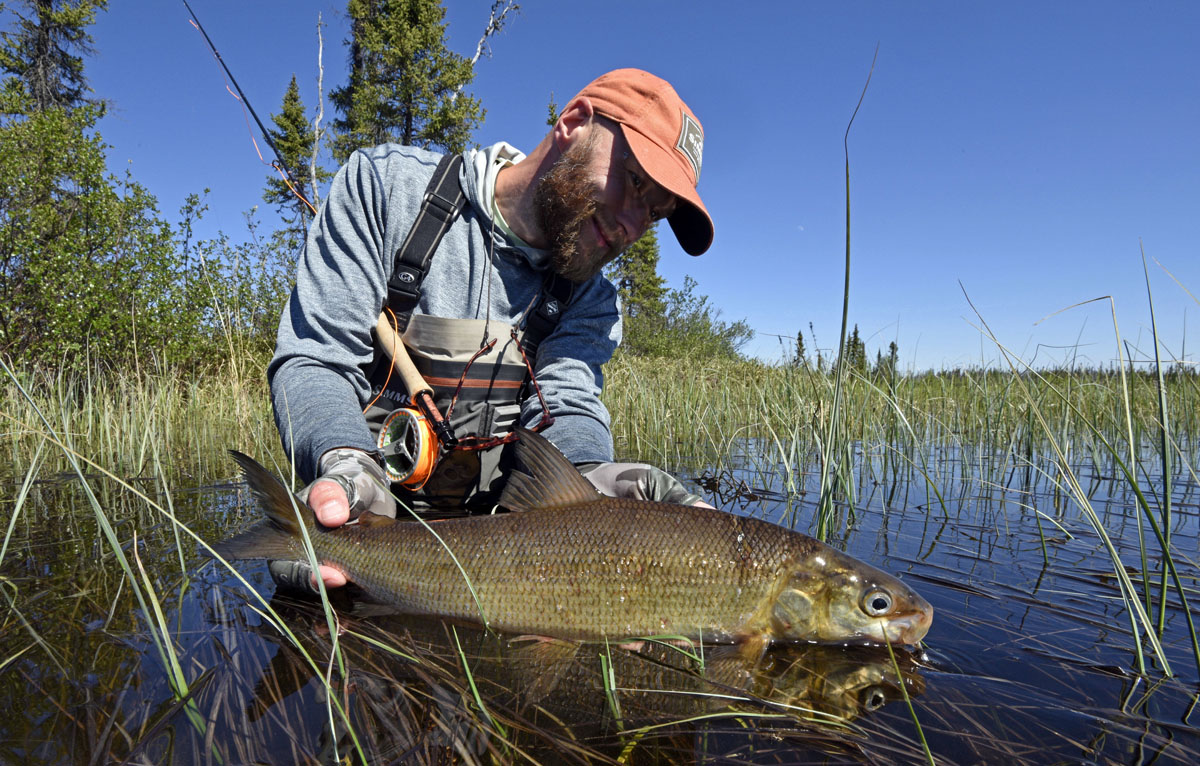
Fact File - Wolf Bay Lodge
Wolf Bay Lodge is the only lodge with a license to guide and fish on Phelps Lake, and since the lake is extremely secluded – and the only way to get there is by hydroplane – the fishing pressure is very minimal.
The lodge, which has been in operation since the early 90s, has an authentic wilderness feel and is rather rudimentary and basic without compromising comfort. In total, there’s room for six fishermen at the lodge, and they all fish from Linder skiffs with big casting platforms in front.
For additional information about prices, check the following link: https://monsterpike.ca or send an email to camp manager, Brent Osika: wolfbay@mts.net
A regional Saskatchewan fishing license is mandatory, and you’ll need to buy it ahead of your trip to Phelps Lake. I can be bought online: https://saskatchewanlicences.active. com/licensing.page
For additional information about the many exciting fishing possibilities in Saskatchewan, and the wealth of other interesting wilderness- and vacation activities in the area, visit
http://www.tourismsaskatchewan. com

Fact File - Equipment
When fly fishing Phelps Lake for pike, 9´ 9 to 10-weight rods paired up with floating or intermediate WF lines are typically used. Lighter rods can be used too, since really big flies are rarely necessary. However, since there are great chances of hooking a real monster, 9-weight – or even better; 10-weight – fly rods are to be preferred, since they will effectively aid in landing and releasing the fish.
With regards to the flies, especially 15 – 20-centimetre-long rabbit strip Zonkers in light colours – preferably with weed guards that allow you to fish them along the bottom or through weeds and Lily pads - work well. Furthermore, small imitations of the lake’s small, silvery baitfish are effective, and the same goes for noisy poppers and Gurgglers.

Be sure to bring along a 9’ 5-weight and a few dry flies and nymphs if you’re interested in catching one of the many trophy whitefish in the lake. Otherwise, you surely need to bring an extra 10-weight, or even a 12-weight fly rod, paired up with a fast-sinking fly line. The massive lake char in Phelps Lake are, no doubt, worth your effort and time. The flies used for them are somewhere between 20 – 25 centimetres in length, weighted, and in bright colours that will attract attention even at the dimmest of depths.
The fishing is done from the boat deck, but you might consider bringing a pair of waders if you’re curious about the neighbouring waters, or if you like to get into the water for a few pictures with your trophy catch. Additionally, there are several clothing items that you need to consider bringing. The weather conditions at the lake are actually quite stable but make no mistake: The conditions can change dramatically from one day to the next. Therefore, you should pack some wind- and rainproof shell outerwear that is capable of keeping you warm and dry.
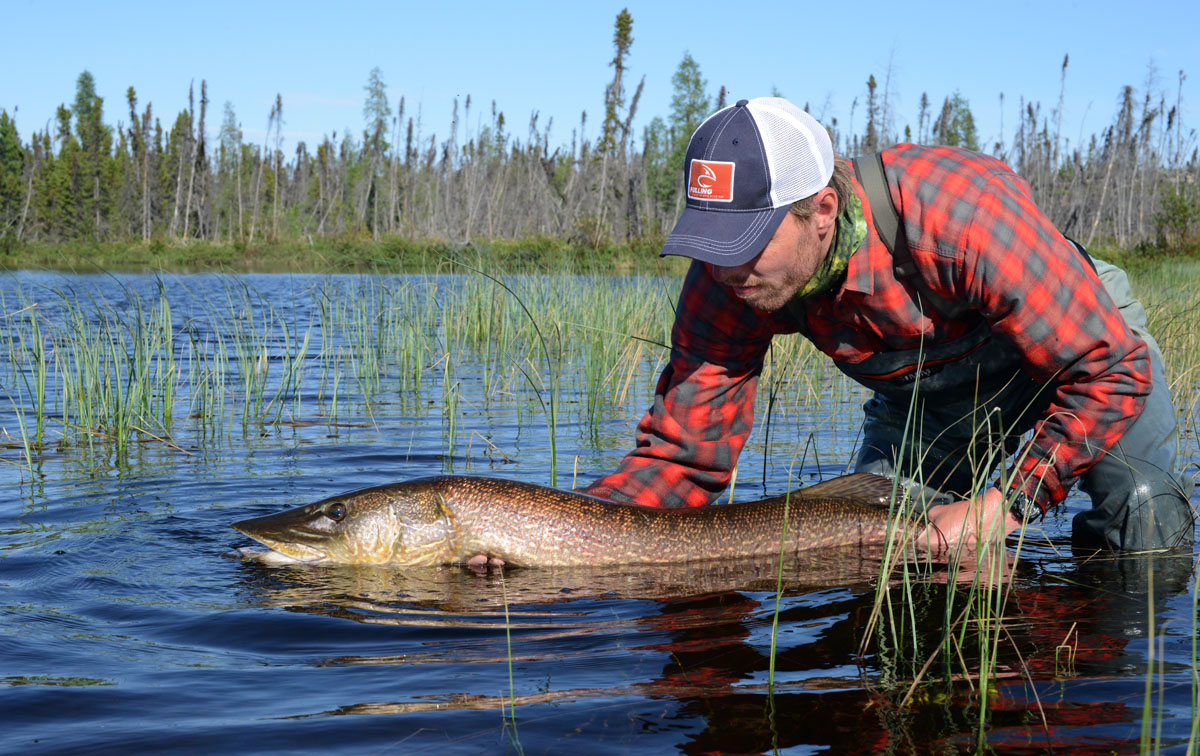
Also, be sure to bring warm layering, such as thermal wool tops and bottoms. Early in the season, the temperatures typically don’t exceed 15 –20 degrees, but during the summer months it gets warmer.
However, be sure to prepare for cold weather, and don’t forget that it can be particularly cold in the morning.
Depending on the weather conditions, there can be a lot of mosquitos in the area and, as a result, it’s a good idea to bring along a mosquito net and some insect repellent. We had great experience with using a new series of BugStopper-clothing from Simms; a highly technical type of impregnated clothing that effectively deters mosquitos, gnats, ticks, horse flies and other bothersome insects. Also, don’t forget sunscreen and a pair of sunglasses as a defence against the sun and its reflections on the water. The latter serves an important additional purpose, of course. They are crucial when it comes to sight-fishing for pike in the shallow bays.

Fact File - Logistics
In order to get to Phelps Lake and Wolf Bay Lodge you need to travel via either Toronto or Calgary to Saskatoon, where you land on a Sunday and stay the night over. From here, a domestic flight, which Wolf Bay Lodge will help arrange, will take you to the outpost, Stony Rapids, on Monday morning. The last leg of the trip, from Stony Rapids to Wolf Bay Lodge, is covered by hydroplane and it takes about 2 hours.










